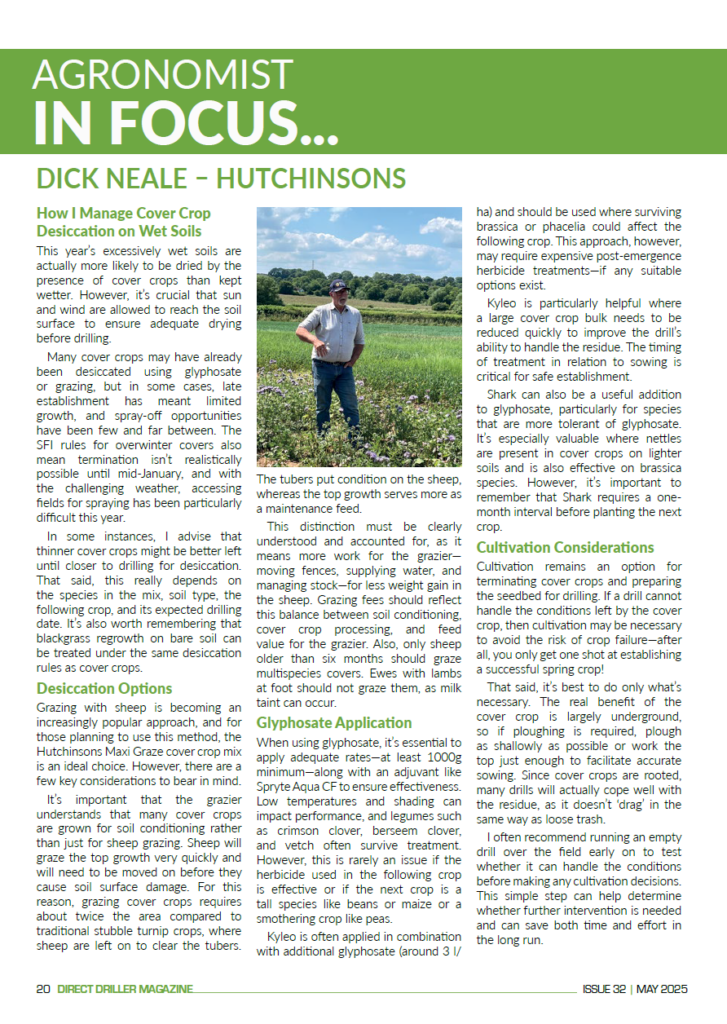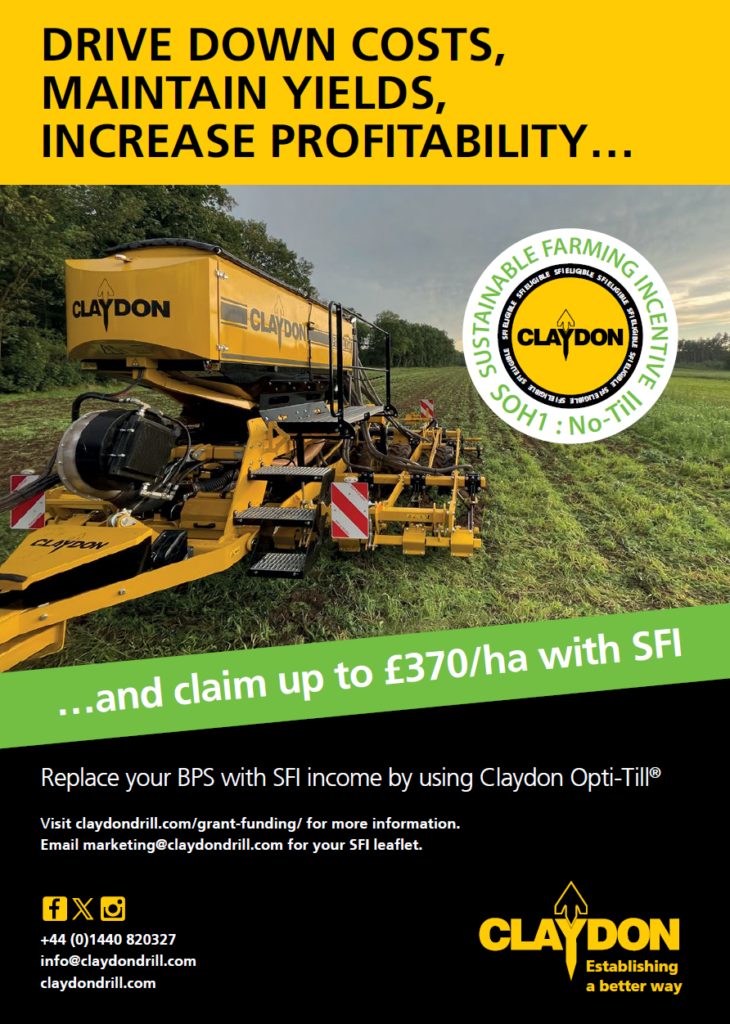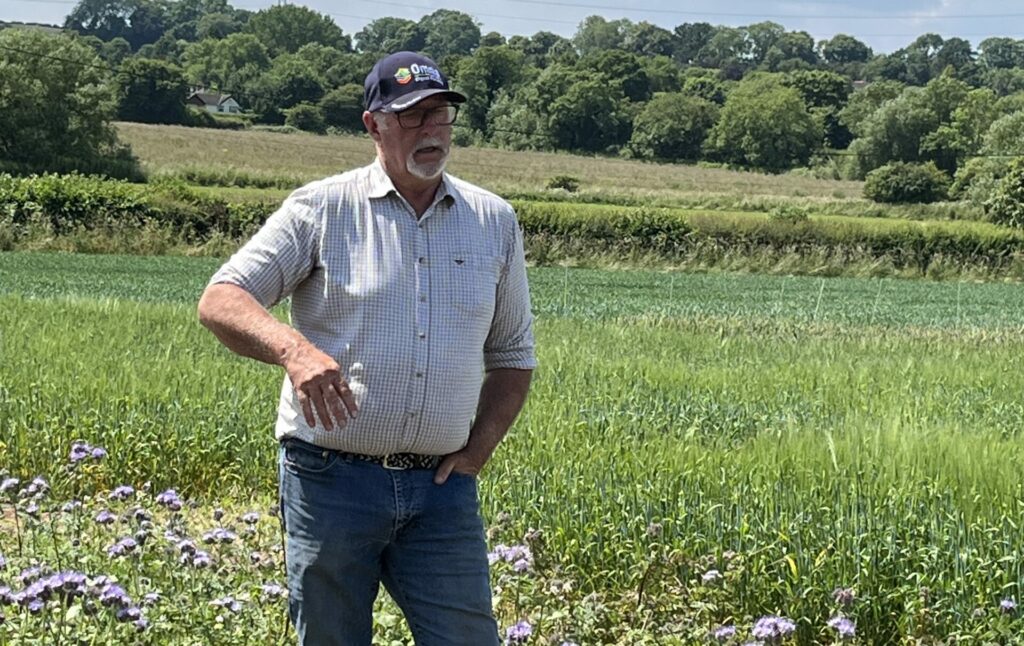How I Manage Cover Crop Desiccation on Wet Soils
This year’s excessively wet soils are actually more likely to be dried by the presence of cover crops than kept wetter. However, it’s crucial that sun and wind are allowed to reach the soil surface to ensure adequate drying before drilling.
Many cover crops may have already been desiccated using glyphosate or grazing, but in some cases, late establishment has meant limited growth, and spray-off opportunities have been few and far between. The SFI rules for overwinter covers also mean termination isn’t realistically possible until mid-January, and with the challenging weather, accessing fields for spraying has been particularly difficult this year.
In some instances, I advise that thinner cover crops might be better left until closer to drilling for desiccation. That said, this really depends on the species in the mix, soil type, the following crop, and its expected drilling date. It’s also worth remembering that blackgrass regrowth on bare soil can be treated under the same desiccation rules as cover crops.
Desiccation Options
Grazing with sheep is becoming an increasingly popular approach, and for those planning to use this method, the Hutchinsons Maxi Graze cover crop mix is an ideal choice. However, there are a few key considerations to bear in mind.
It’s important that the grazier understands that many cover crops are grown for soil conditioning rather than just for sheep grazing. Sheep will graze the top growth very quickly and will need to be moved on before they cause soil surface damage. For this reason, grazing cover crops requires about twice the area compared to traditional stubble turnip crops, where sheep are left on to clear the tubers. The tubers put condition on the sheep, whereas the top growth serves more as a maintenance feed.
This distinction must be clearly understood and accounted for, as it means more work for the grazier—moving fences, supplying water, and managing stock—for less weight gain in the sheep. Grazing fees should reflect this balance between soil conditioning, cover crop processing, and feed value for the grazier. Also, only sheep older than six months should graze multispecies covers. Ewes with lambs at foot should not graze them, as milk taint can occur.
Glyphosate Application
When using glyphosate, it’s essential to apply adequate rates—at least 1000g minimum—along with an adjuvant like Spryte Aqua CF to ensure effectiveness. Low temperatures and shading can impact performance, and legumes such as crimson clover, berseem clover, and vetch often survive treatment. However, this is rarely an issue if the herbicide used in the following crop is effective or if the next crop is a tall species like beans or maize or a smothering crop like peas.
Kyleo is often applied in combination with additional glyphosate (around 3 l/ha) and should be used where surviving brassica or phacelia could affect the following crop. This approach, however, may require expensive post-emergence herbicide treatments—if any suitable options exist.
Kyleo is particularly helpful where a large cover crop bulk needs to be reduced quickly to improve the drill’s ability to handle the residue. The timing of treatment in relation to sowing is critical for safe establishment.
Shark can also be a useful addition to glyphosate, particularly for species that are more tolerant of glyphosate. It’s especially valuable where nettles are present in cover crops on lighter soils and is also effective on brassica species. However, it’s important to remember that Shark requires a one-month interval before planting the next crop.
Cultivation Considerations
Cultivation remains an option for terminating cover crops and preparing the seedbed for drilling. If a drill cannot handle the conditions left by the cover crop, then cultivation may be necessary to avoid the risk of crop failure—after all, you only get one shot at establishing a successful spring crop!
That said, it’s best to do only what’s necessary. The real benefit of the cover crop is largely underground, so if ploughing is required, plough as shallowly as possible or work the top just enough to facilitate accurate sowing. Since cover crops are rooted, many drills will actually cope well with the residue, as it doesn’t ‘drag’ in the same way as loose trash.
I often recommend running an empty drill over the field early on to test whether it can handle the conditions before making any cultivation decisions. This simple step can help determine whether further intervention is needed and can save both time and effort in the long run.


